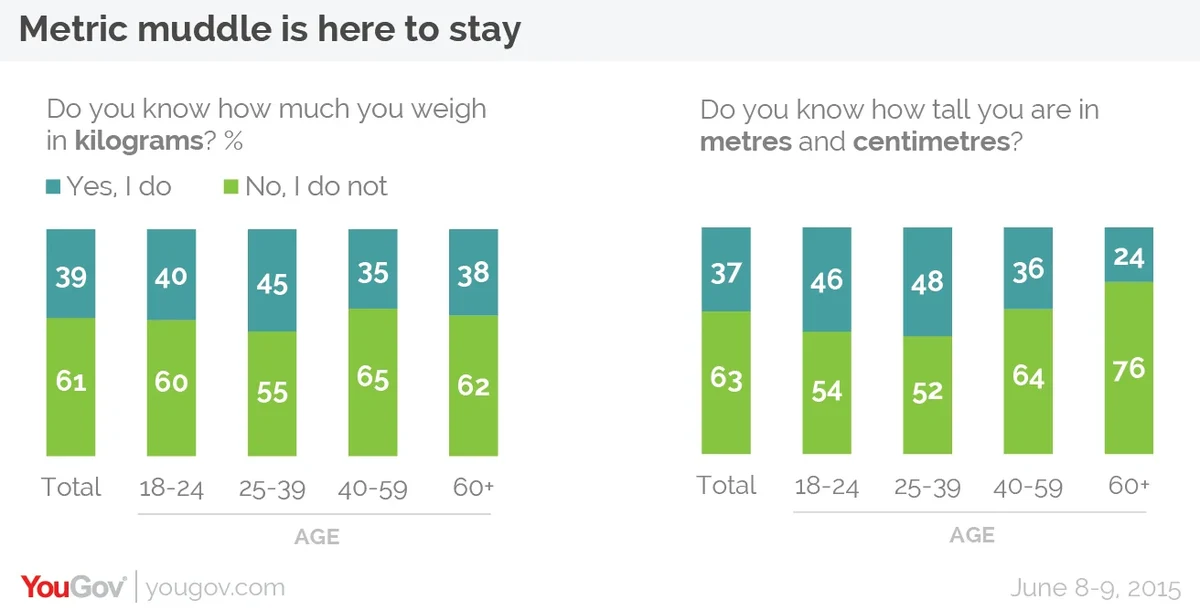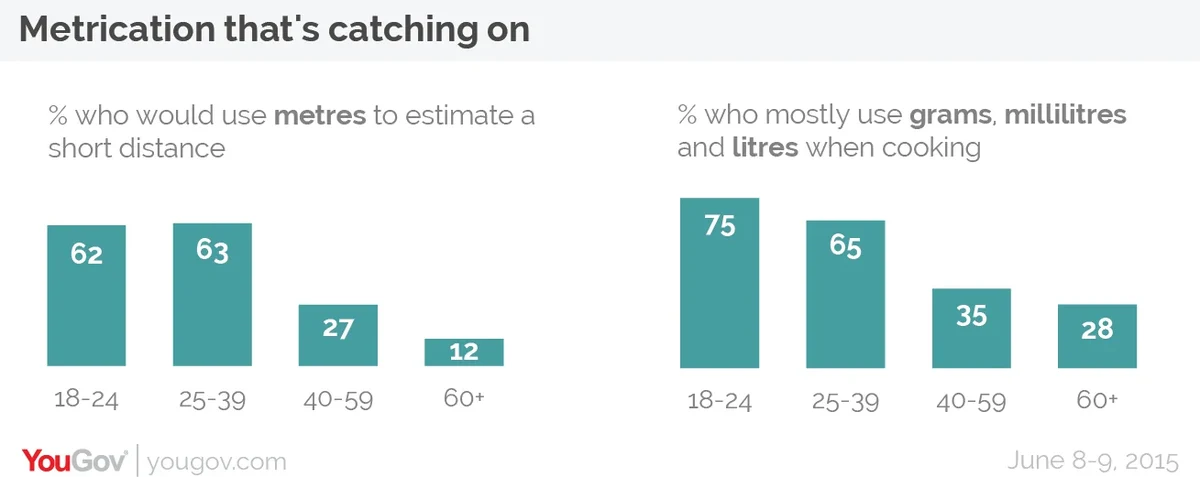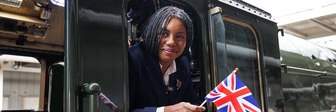For some things we use metric measurements and other things we use imperial - and in most areas the younger generations are just as confused
In policy terms metrication (converting to the metric system of measurement) makes perfect sense. The existence of two systems is an unecessary complication, and unhelpful to standardising medicine and technology. In Britain, metrication was formally endorsed by the government in 1965, but the imperial system is still commonly used. The mix confuses shoppers, children and holiday makers.
New YouGov research reveals the continuing extent of Britain’s metric muddle. There are some measurements where metric is beginning to catch on, but there are others with no evidence of change.
By the late 1970s all British examination boards were requiring knowledge of the metric system, but even today most 18-24 year-olds still do not know how much they weigh in kilograms (60%) or how tall they are in metres and centimetres (54%).

There has been a slightly better uptake of metric in knowing how tall you are – the gap between 18-24s and over-60s is 22%.
Metrication in the kitchen is changing fastest, with 75% of 18-24s using grams, millilitres and litres compared to only 28% of over-60s. The use of metres to estimate short distances has also had success, with 62% of young people doing so compared to 12% of over-60s. Over one in four young people (27%) still use yards however.

In 2012, Lord Howe, who was responsible for metrication as a minister in the 1970s, bemoaned the confusion caused by imperial measurements for visitors to the London Olympics. He added that the country’s ‘dithering’ attitude to metrication had created a “metrically literate elite and a rudderless and bewildered majority”. There is some evidence in our polling of a class divide on measurements, as members of the ABC1 ‘middle class’ social grade are more likely on every occasion than ‘working class’ people to use the metric system, and are even 14 points more likely to use it in cooking and estimating short distances.









